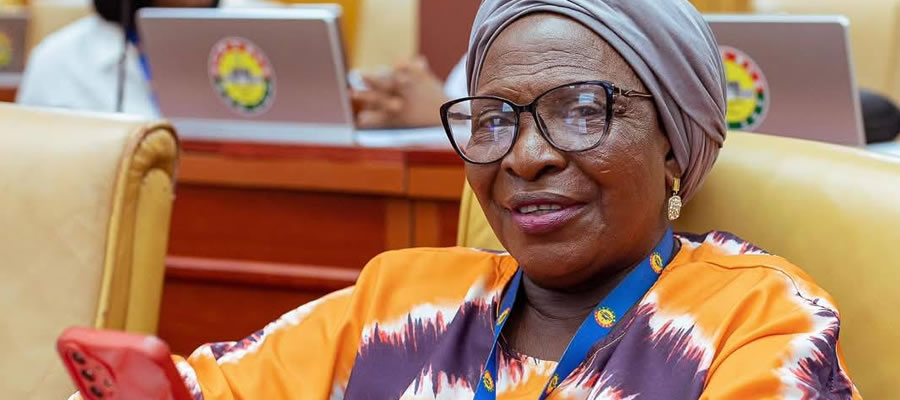

Crop Production
The crops grown are Cocoa, Rice, Yam, Cocoyam Plantain and Cassava. However, target for all the food crops were not met in 2009. For instance 15% increment in maize production was targeted for 2009 and only 6.8% was achieved. The table below demonstrates food crops production .
Access to Extension Services
According to the socio-economic survey, 14.4% receive extension services whereas 85.6% of farmers do not receive extension services. Most of the farmers do not receive extension services because of the few extension officers in the Municipality and also there are no well organized farmers associations as only 25% belonged an association as was revealed from the survey. This implies that most farmers still use traditional methods of farming which leads to low production capacity.
Problems of Food Crops Production
From the survey, it was found out that 14.3% of households encountered problems in land acquisition, 59.3% also encountered problems in the marketing of their produce. Other problems faced by farmers within the households were inadequate rainfall, low application of modern technology in farming, inadequate fund to expand farms, poor roads conditions among others.
Livestock Production
Notably Livestock species in the include: Cattle, Goat, Sheep, Swine (Exotic) and Grass cutter. For example the production of Goat increased by 21% against a target of 44.5% for 2009, whilst that of grasscutters increased by 103.6% against a target of 172.7. The reasons advanced so far for these include: inadequate capital to expand farms, inadequate veterinary officers, outbreak of disease among others. The table below indicates Livestock production in the district.
Poultry Birds Production
The Poultry Industry is booming . At the moment the Poultry Industry specifically table egg production is operating at a large scale levels. Poultry production is the largest in the Region and employs a high proportion of the Labour Force. Generally, there had been an enormous increase in production due to growing interest in the industry. The Municipality has 13 large scale poultry farms. Just like the food crops and the livestock industries, targets for the year 2009 were not met. For instance, out of the targets of 52.4% and 133.3% for Fowls (Exotic) and Guinea Fowls, 42.9% and74.7% was achieved respectively. These are attributed to low access to credit facilities, high cost of Poultry feed due to lack of Poultry feed industry, high cost of Poultry drugs, inadequate capital to expand farms, inadequate veterinary officers, etc. Illustrated in the table are the core indicators of Poultry birds’ production in Dormaa East.
Agro-Processing
Over the years, some effort has been made by individual groups and the Assembly to add value to the farm produce through processing. Agro-processing is currently on a small-scale. The municipality has six agro-processing plants located in various communities such as gari production at Kyeremasu (producing far below capacity), palm oil extraction at Wamanafo, and production of akpeteshie in several communities across .
Marketing Centres and Days in the Municipality.
Market days are observed daily as well as weekly markets. Daily markets are observed in each of the settlement in the municipality. However, weekly markets are observed in Fridays at Wamfie the Capital and Wamanafo on Sundays.
Food Security
At the World Food Summit in 1996, food security was agreed to exist when: “All people, at all times, have physical and economic access to sufficient, safe and nutritious food to meet their dietary needs and food preferences for an active and healthy life.”
According to the Development Strategy for Poverty Reduction published in March 2000 by the Ministry of Finance, poverty is widespread in the country, with 42.6% living below the poverty line. The incidence of poverty and extreme poverty is indicated to have declined in Ghana during the 1990s, taking the country as a whole.
Ghana is on the right track to achieve the first of the five MDG (having poverty and hunger by 2015), as poverty has dropped from 51% in 1991 to 28.5% in 2005/2006. A person living on less than USD1 per day is defined as poor OR: According to the GLSSV, the poverty line is anchored on the nutrition needs of the Ghanaian population. The lower poverty line is an income of GH¢288 per adult per year or GH¢0.78 per day, below which extreme poverty starts. The upper poverty level is GH¢371 per adult per year or GH¢1.02 per day (including food and non-food consumption), above which the individual is considered able to purchase essential food and non-food needs (GLSSV).
However, reporting progress at national level clearly hides some crucial details that must not be overlooked and remain un-addressed. For example, 18.2% of Ghanaians still live in extreme poverty and regional differences in this regard could not be more prominent. The poverty line incorporates both essential food and non food consumption. Individuals consuming at levels below this line, can be considered unable to purchase enough food to meet their nutritional requirements.
Food and cash crop agriculture is predominantly rain-fed in the District. Food production fluctuates both quantitatively and qualitatively, from year to year due to frequent occurrence of climatic changes during the growing seasons. Sometimes fluctuations of heavy rains within and between agricultural seasons destroy both crops and livestock. Rainfall whose control is beyond the capability of the small scale farmer is thus a major determinant of the annual fluctuations of total household and national food output. This situation creates food insecurity at household levels which can be transitory in poverty areas and chronic in extreme poverty areas.
Date Created : 11/16/2017 2:49:05 AM












 facebook
facebook
 twitter
twitter
 Youtube
Youtube
 +233 593 831 280
+233 593 831 280 0800 430 430
0800 430 430 GPS: GE-231-4383
GPS: GE-231-4383 info@ghanadistricts.com
info@ghanadistricts.com Box GP1044, Accra, Ghana
Box GP1044, Accra, Ghana